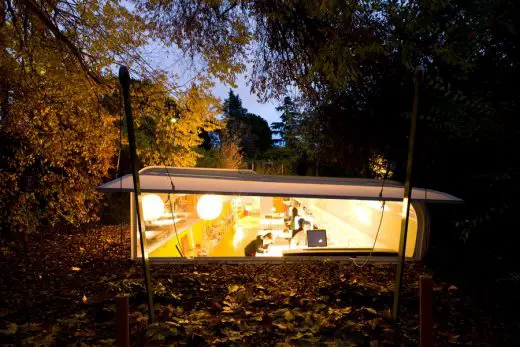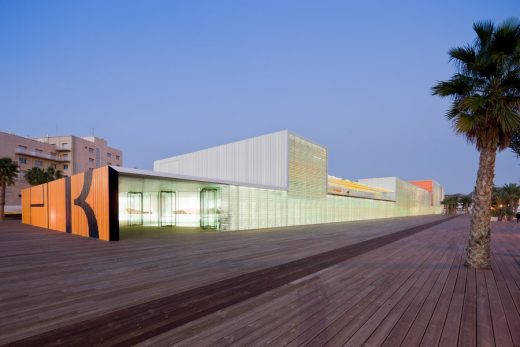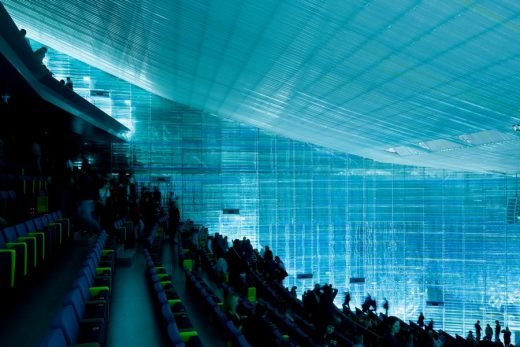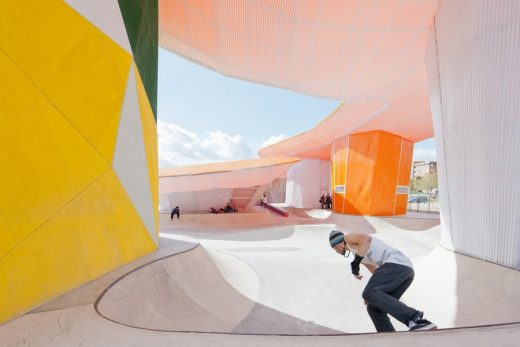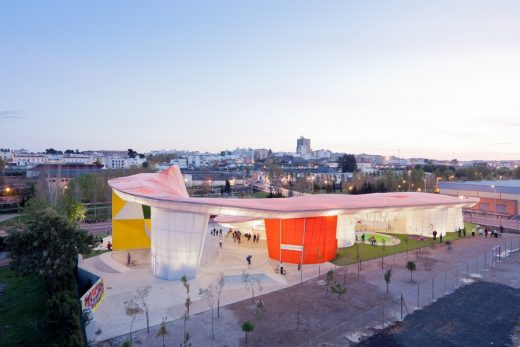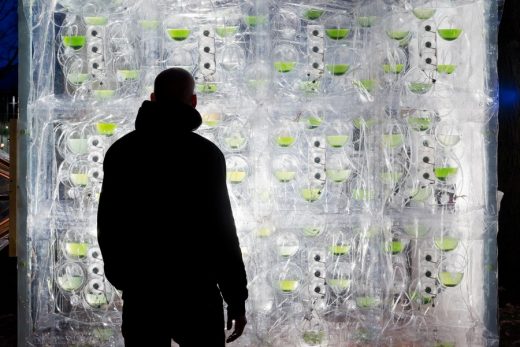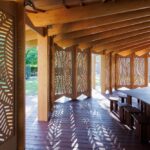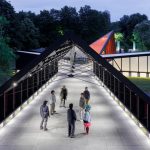Serpentine Gallery Pavilion 2015, Architect, Kensington Gardens Design, Project, Pictures, England
Serpentine Gallery Pavilion 2015
Arts Project in Kensington Gardens, London, UK design by SelgasCano Architects, Madrid
25 Mar 2015
Serpentine Gallery Pavilion in 2015
25 Jun – 18 Oct 2015
Design: SelgasCano
Location: Kensington Gardens, London, W2 3XA, England, UK
Serpentine Reveals Colourful, Chrysalis-Like Design For The 15th Annual Pavilion
Serpentine reveals today designs for the 15th annual Pavilion. The render by Madrid-based architects SelgasCano shows an amorphous, double-skinned, polygonal structure consisting of panels of a translucent, multi-coloured fabric membrane (ETFE) woven through and wrapped in webbing. Visitors will be able to enter and exit the Pavilion at a number of different points, passing through a ‘secret corridor’ between the outer and inner layer of the structure and into the Pavilion’s brilliant, stained glass-effect interior.
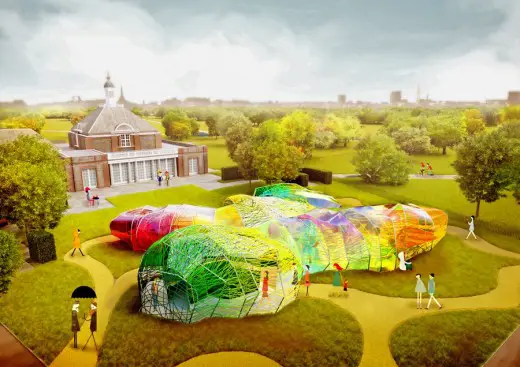
photo © Steven Kevin Howson / SelgasCano
Serpentine Galleries Director, Julia Peyton-Jones and Co-Director Hans Ulrich Obrist said: ‘We are proud to work with SelgasCano in this, the 15th year of a commission unique in the western world that continues to showcase some of the boldest and innovative designs in contemporary architecture internationally. In keeping with their reputation for playful designs and bold use of colour, SelgasCano’s structure will be an extraordinary chrysalis-like structure, as organic as the surrounding gardens. We can’t wait to go inside to experience the light diffused through the coloured panels like stained glass windows. It will be a place for people to meet, to have coffee and to experience the live events we put on throughout the summer.’
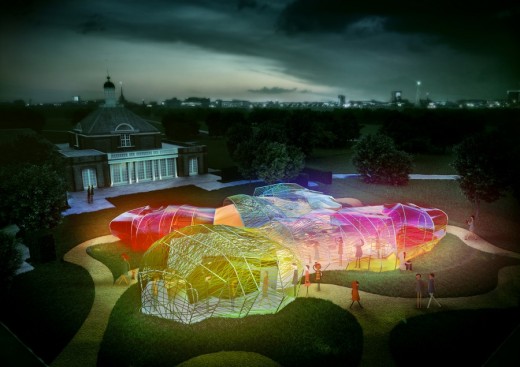
photo © Steven Kevin Howson / SelgasCano
Since the commission was launched in 2000 by Director Julia Peyton-Jones, the annual Serpentine Pavilion – unique in terms of its conception, delivery and funding model – has been designed by some of the world’s greatest architects, including Zaha Hadid, Oscar Niemeyer, Rem Koolhaas and Cecil Balmond, Frank Gehry and Jean Nouvel. Projects have ranged from SANAA’s floating, aluminium cloud in 2009 to Peter Zumthor’s zen-like garden enclosure in 2011 to Smiljan Radić’s shell-like structure in 2014. In keeping with the criteria of the commission, this will be the first built structure in England by SelgasCano.
The architects describe their design: ‘When the Serpentine invited us to design the Pavilion, we began to think about what the structure needed to provide and what materials should be used in a Royal Park in London. These questions, mixed with our own architectural interests and the knowledge that the design needs to connect with nature and feel part of the landscape, provided us with a concept based on pure visitor experience. We sought a way to allow the public to experience architecture through simple elements: structure, light, transparency, shadows, lightness, form, sensitivity, change, surprise, colour and materials. We have therefore designed a Pavilion which incorporates all of these elements. The spatial qualities of the Pavilion only unfold when accessing the structure and being immersed within it. Each entrance allows for a specific journey through the space, characterised by colour, light and irregular shapes with surprising volumes. This is accomplished by creating a double-layered shell, made of opaque and translucent fluorine-based plastic (ETFE) in a variety of colours. At the heart of the Pavilion is an open space for gathering as well as a café. We are also very much aware of the Pavilion’s anniversary in our design for the 15th annual commission. The structure therefore had to be – without resembling previous Pavilions – a tribute to them all and a homage to all the stories told within those designs.’
On Friday nights, between July and September, the Pavilion will once again become the stage for the Serpentine’s Park Nights sponsored for the third year by COS. The events bring together art, poetry, music, film, literature and theory and include three new major commissions by artists Jesse Darling, Fleur Melbourn and Marianna Simnett.
The Serpentine is delighted that Goldman Sachs is the headline sponsor of this year’s Pavilion. AECOM, in collaboration with David Glover, will again provide engineering and technical design services. While this is the third Serpentine Pavilion for AECOM, David Glover has worked on the majority of Pavilion designs to date.
Michael Sherwood and Richard Gnodde, Co-Chief Executive Officers, Goldman Sachs International, said:
’London is one of the world’s leading financial and cultural centres and we believe that projects like the Pavilion encourage and inspire the exchange of ideas and perspectives across generations, reflecting the important role that businesses can play in supporting art and culture in the UK.’
4 Dec 2014
Serpentine Pavilion 2015
Location: Kensington Gardens, London, W2 3XA, UK
Architects: SelgasCano
In 2015 Serpentine Galleries celebrates the 15th anniversary of the world-renowned Pavilion commission. Over the past 15 years the Serpentine Pavilion has become an international site for architectural experimentation, presenting inspirational temporary structures by some of the world’s greatest architects. A much-anticipated landmark in London each summer, the Pavilion is one of the top-ten most visited architectural and design exhibitions in the world.
Plasencia Auditorium and Congress Centre, Cáseres, Spain 2005/2013:
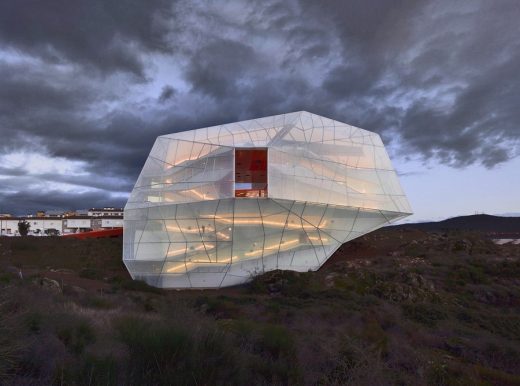
picture © Hisao Suzuki
Serpentine Galleries announces that Spanish architects SelgasCano will design the 15th Serpentine Pavilion. The award-winning studio, headed by José Selgas and Lucía Cano, is the first Spanish architecture practice to be asked to design the temporary Pavilion on the Serpentine’s lawn in London’s Kensington Gardens. In keeping with the criteria of the scheme, this will be the studio’s first new structure in the UK, with plans set to be revealed in February 2015.
SelgasCano’s design follows Smiljan Radić’s Pavilion in 2014, which was likened by many to a spaceship resting on Neolithic stones. Previous architects include Sou Fujimoto, 2013; Herzog & de Meuron and Ai Weiwei, 2012; Frank Gehry, 2008; Rem Koolhaas and Cecil Balmond, with Arup, 2006; Oscar Niemeyer, 2003; Daniel Libeskind with Arup, 2001; and Zaha Hadid, who designed the inaugural Pavilion in 2000.
Office in the Woods, Madrid, Spain 2006/2009
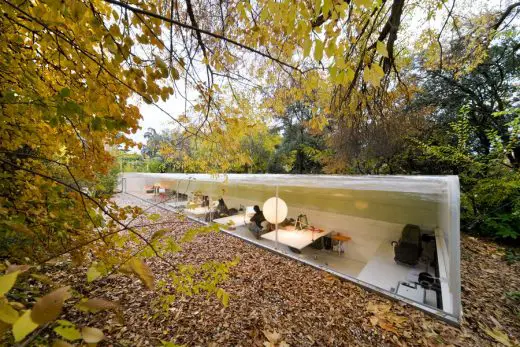
As with previous Pavilion commissions, the brief is to design a flexible, multi-purpose social space with a café that is open to all throughout the summer. While the architects have yet to submit plans, previous projects – such as the amorphous Plasencia Auditorium and Congress Centre, Cáceres; the light filled harbour-side structure of El ‘B’, Cartagena Auditorium and Congress Centre; the playful floating shapes of Mérida Factory Youth Movement; and the subterranean Office in the Woods – offer clues as to the direction they may take with this iconic commission. SelgasCano’s work is characterised by a use of synthetic materials and new technologies, often rarely applied to architecture. Taking inspiration from Luis Barragan and Richard Rogers, the architects use distinctive colours and references to nature throughout their designs. Their belief that architecture is secondary to nature also informs the design course on Nature and Climatology that they teach at the Massachusetts Institute of Technology and their work on the Educational and Medical Pavilion in Turkana, Kenya.
El ‘B’. Cartagena, Auditorium and Congress Centre, Murcia, Spain 2001/2011
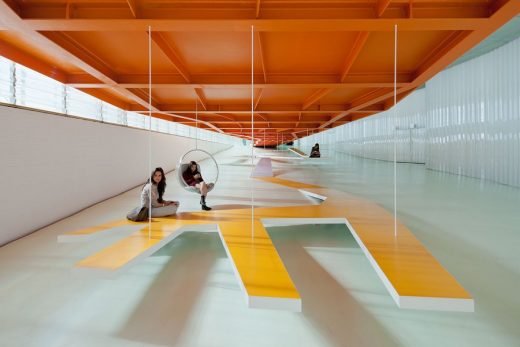
José Selgas and Lucía Cano, who formed the practice SelgasCano in 1998 in Madrid, have completed the majority of their buildings in Spain through a diverse range of commissions. The studio is currently working on a number of projects worldwide, including Pip House, Laurel Canyon, Los Angeles; the renovation of Texas Square in Oranjestad, Aruba, Lesser Antilles; and La Canaria House, Mount Washington, Los Angeles.
Exhibiting at the Guggenheim Museum and the Museum of Modern Art, New York, as well as MOT, Tokyo, and the Design Museum, London, SelgasCano was chosen for the Venice Architecture Biennale in 2010, curated by Japanese architect Kazuyo Sejima of SANAA, architects of the Serpentine’s 2009 Pavilion. SelgasCano has designed the interior of Second Home, a revolutionary new workspace for London’s creative industries in the heart of London’s technology quarter in Shoreditch.
Factory Mérida, Badajoz, Spain 2006/2011
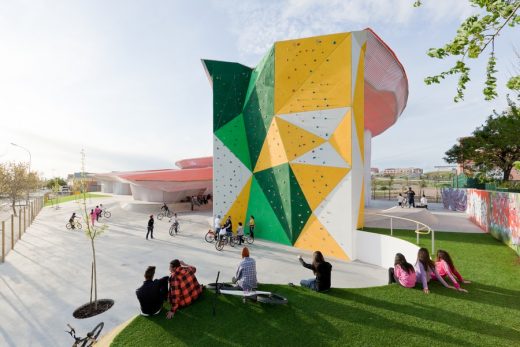
The Serpentine is delighted that Goldman Sachs is the headline sponsor of this year’s Pavilion. AECOM, in collaboration with David Glover, will again provide engineering and technical design services. While this is the third Serpentine Pavilion for AECOM, David Glover has worked on the designs for the majority of the Pavilions to date.
José Selgas and Lucía Cano:
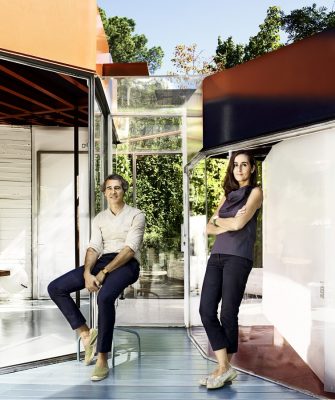
picture courtesy of the architects
SelgasCano, designers of the 15th Serpentine Pavilion, said:
“This is an amazing and unique opportunity to work in a Royal Garden in the centre of London. Both aspects, ‘Garden’ and ‘London’, are very important for us in the development of this project. We are in the middle of a garden, a ‘Royal’ garden indeed, once divided in two and separated by a Serpentine. That garden clings in the middle of London. Garden and London (which best defines London?) will be the elements to show and develop in the Pavilion. For that we are going to use only one material as a canvas for both: the Transparency. That ‘material’ has to be explored in all its structural possibilities, avoiding any other secondary material that supports it, and the most advanced technologies will be needed to be employed to accomplish that transparency. A good definition for the pavilion can be taken from J. M. Barrie: it aims to be as a ‘Betwixt-and-Between’.”
Amidst the Air Installation at 13th Venice Bienale Italy 2012:
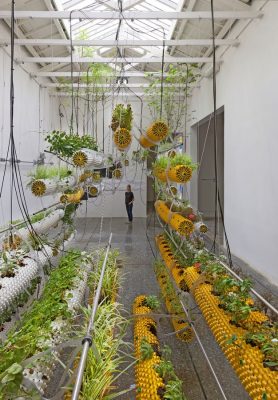
picture © Hisao Suzuki
Julia Peyton-Jones, Director, and Hans Ulrich Obrist, Co-Director, Serpentine Galleries, said:
“SelgasCano are architects for our time who offer a tantalising vision of the future. Their innovative use of materials, bold application of colour, informed by playfulness and a passion for nature ensures that next summer’s Pavilion will be very exciting. They are the perfect choice to celebrate the Pavilion’s 15th anniversary.”
Konokono Turkana SCA:
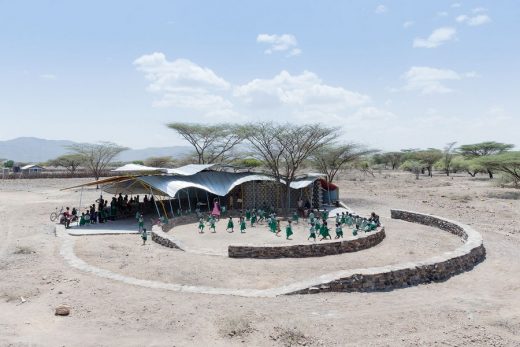
picture © Iwan Baan
Serpentine Gallery Pavilion info from the Serpentine Gallery
London Architecture
London Architecture Walking Tours
Serpentine Pavilion London Architecture
Serpentine Gallery Pavilion
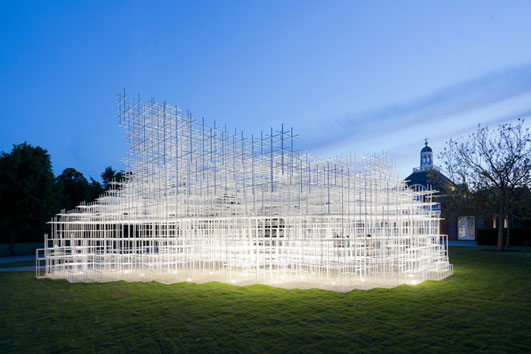
Serpentine Gallery Pavilion 2013 Designed by Sou Fujimoto © Sou Fujimoto Architects ; Image © 2013 Iwan Baan
Four Summer Houses in the Serpentine 2016 Programme
Serpentine Sackler Gallery, Kensington Gardens, London, UK
Serpentine Pavilion Architects
Past Pavilion architects:
Serpentine Pavilion 2007 original architect : Snøhetta
Serpentine Pavilion architect 2006 : Rem Koolhaas
Serpentine Pavilion architect 2005 : Álvaro Siza & Eduardo Souto de Moura
Serpentine Pavilion architect 2003 : Oscar Niemeyer
Serpentine Pavilion architect 2002 : Toyo Ito
Serpentine Pavilion architect 2001 : Daniel Libeskind
Serpentine Pavilion architect 2000 : Zaha Hadid Architects
Comments / photos for the Serpentine Pavilion 2015 page welcome

